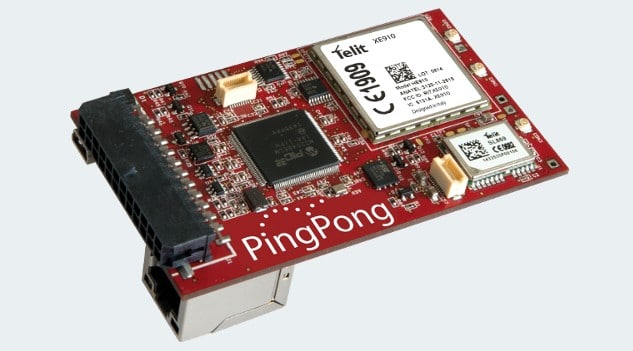Plug this board to your gadget and get it connected to the network – as simple as that.
By Anagha P
PingPong, an Internet of Things (IoT) edge node from Germany-based Round Solutions is a powerful and flexible hardware platform for IoT and machine-to-machine (M2M) applications, which connects field devices to the cloud. It is basically a plug, push and play device that can be directly plugged to a physical device in order to let it communicate to other devices or the Web. It can be used for both wired and wireless connections. The modular hardware design can integrate custom-specific applications and communication standards into a single solution platform that has a small form factor.
Our PingPong platform offers software engineers an application-ready, pre-validated PingPong data exchange mechanism, which eases the IoT integration of any field device. With the supplied Round Solutions Open Source PingPong Software Development Kits, the platform can be configured for nearly all IoT/M2M applications, such as sensor reading, asset tracking, routers, measurement technology, telemetry and security control. Thus, Round Solutions’ PingPong offers companies wanting to transfer their data to IoT cloud-servers a complete solution including software libraries and source code.
– Ben Hoelke, CEO, Round Solutions
The offering
The IoT quick start kit comes as a complete solution including software libraries and source code. The basic hardware platform has a 32-bit 200MHz Microchip PIC32MZ microcontroller unit (MCU) running in C/C++. It is supported by a real-time operating system (RTOS) and exhibits fast processing capabilities.
The standard PingPong quick start kit includes:
- High-speed Telit cellular module
- A positioning component for the global navigation satellite system (GNSS)
- Ethernet
- Universal serial bus (USB)
- Controller area network (CAN) bus
- Inside-glass-antenna for general packet radio service (GPRS) and universal mobile telecommunications system (UMTS), for mobile equipment/female (FME/F)
- Small global positioning system (GPS) antenna patch with magnetic socket
- Five source code examples for PingPong applications
- Antenna cable, radio frequency (RF) cable
- Power supply of 12V, 1.6A
The high-speed cellular module and the numerous interfaces can be controlled over the cloud.
Alternate version: Another model of this platform, which will soon be available in stores, would run on Linux and use a powerful ARM Cortex processor to offer more functionality and application support.
Appreciably modular
One factor that makes the device different is its ability to support various plug and play extension boards. The developer can add a variety of expansion cards to a PingPong platform, including those for wireless local area network (WLAN), Bluetooth, input/output (I/0), Iridium satellite communications, ISM/RF, SigFox, near-field communication (NFC) or radio-frequency identification (RFID) and camera connectivity. Different combinations of the base circuit board and its extension boards would cover almost every application area and use case, claim the manufacturers. All these functions are application-ready, which means these expansion cards are ready to use as soon as they are attached to the motherboard. The platform also offers optional access to a dedicated M2M/IoT subscriber identity module (SIM) card (supporting both 2G and 3G) and connectivity to a cloud platform.
Targeted applications
The PingPong board can be used in sensor reading mechanisms, routers, metering or telemetry devices, security and surveillance control, asset tracking systems, and Wi-Fi/Bluetooth gateways. The target applications range from cloud-connected oil tanks and intelligent waste bins to cloud-connected gateway systems for manufacturing robots.
Further details
The author is a dancer, karaoke aficionado, and a technical correspondent at EFY.












